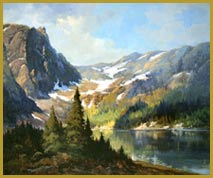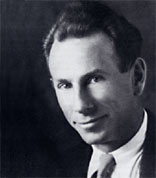|
Robert
W. Wood saw art as a vocation rather than an avocation, and from
the early stages of his career his works sold readily. From the
1940s, when his works began to be published widely, the popularity
of Robert Wood reproductions made him well-known and fueled an even
greater demand for his original paintings.
Because of Wood's popularity and the value that some of his paintings
have reached there are a significant number of inauthentic works
in existence. While some were clearly painted as forgeries by unscrupulous
artists, most paintings that are incorrectly attributed to Robert
Wood were not created with the intent to deceive. Wood helped to
produce several "how-to" books that were published in
Tustin, California by the art entrepreneur Walter T. Foster. Robert
Wood Paints Landscapes and Seascapes and subsequent volumes
sold tens of thousands of copies and encouraged many amateur painters
to emulate his style and even to copy the actual works in the tabloid-sized
booklets. These copies were sometimes painted with Wood's name,
with the amateur painter who was responsible never dreaming that
decades later, their Sunday-afternoon effort would be attributed
to Robert Wood.
In
the 1970s, when Wood's work began to sell for thousands of dollars,
actual forgeries started to appear, although few that we have come
across have the sophistication to foil an educated dealer or collector.
When large quantities of art began to be imported from Taiwan and
Korea in the mid-1970s, the artists often copied works and names
from catalogs of reproductions. These assembly-line artists recognized
that what was popular in reproduction was probably a popular subject
with American viewers, and because Wood was so well represented
in publication, his works were often emulated and even signes with
a forged signature. These Asian imports are usually easy to spot
because they are painted on very inexpensive cotton canvasses, with
inexpensive, non-expandable stretcher bars, and the quality and
technique are not consistent with authentic works by Robert Wood.
Being
able to tell an authentic work from an inauthentic painting is a
matter of connoisseurship. With Old Master paintings, the artist's
or forger's materials can be tested to determine if the canvas or
panel stretchers or pigments are compatible with what was available
when the work was said to have been painted. With Wood's work, however,
these methods are of little use. The materials he employed varied
greatly and were in common use. Instead it is a thorough knowledge
of his subjects, his various periods, his signatures, his palette,
and especially his technique, which allows an expert to determine
authenticity.
|
|
|



